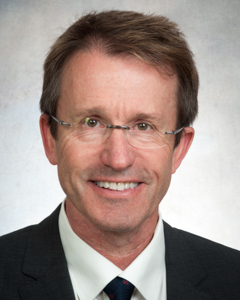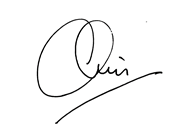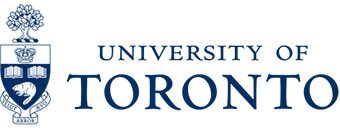
Dr. Christopher Forrest
“Imagination is everything. It is the preview of life’s coming attractions.”
― Albert Einstein
Starting back to work after the Labor Day weekend and with the glory of my vacation fading into the distance, the slight chill in the morning air and the absence of daylight at my usual waking time confirmed the impression that summer was officially over. Remarkable how the benefits of a couple of weeks on holiday can evaporate within minutes of being back at work. So welcome back everyone! I hope that you all had a great one and had the time to enjoy family, friends and some albeit brief, warm weather!
I have said before that the fall is my favorite time of year. The light changes, accentuates and highlights details of the landscape in a way that you see things that were not obvious before. Fall harvest and the hustle and bustle of going back to school, the TIFF and all its excitement, a change in wardrobe from flip flops to loafers. There is something about renewal and fresh opportunities that come with the change in the colour of the leaves…a reminder that winter is coming and there is a subtle urgency to get things done and time to make some plans.
I am very excited about the coming academic year. We have a new research director, Dr. Greg Borschel and I am looking forward to hearing Greg’s plans for the division. I have expanded the scope and size of our executive committee to incorporate Undergraduate Education (Dr. Melinda Musgrave) and Quality Improvement (Dr. Karen Wong) in order to provide a comprehensive infrastructure to manage the needs of the division and provide innovative and creative opportunities for the future (more about that later). Our new website is up and running and already I have plans for additional enhancements to it.
But firstly, I would like to welcome our new PGY-1 residents into the Plastic Surgery family. We are thrilled to welcome Miliana Vojvodich, Stephanie Dreckmann, Melissa Roy and Helene Retrouvey. We are very fortunate to have the best of the best apply for residency positions in our program and I look forward to following the career trajectories of these very impressive junior residents. We are also blessed to have a remarkable cast of fellows from all points of the globe who disrupt their lives (and the lives of their families) to come and train here. Their previous life experience and cultural diversity helps create a wonderful mosaic for our division. I am delighted to welcome Phuong Nguyen – Pediatric Craniofacial Surgery (Los Angeles, CA), Darren Smith – Pediatric Craniofacial Surgery (Pittsburgh, PA), Frederico Vargas – Pediatric Plastic Surgery (Columbia), Noam Armon – Pediatric Plastic Surgery (Israel), Sheikhan Al-Hashmi – Aesthetic and Pediatric Plastic Surgery (Toronto; originally from Saudi Arabia), Maher Alahdab –Burn Surgery (Saudi Arabia), Nawaf Alotaibi – Trauma Surgery (Saudi Arabia), Sandhya Deo – Breast Surgery (New Zealand), Elisabeth Kappos – Microsurgery (Switzerland), Eugene Lim – Hand Surgery (Melbourne, Australia), Mark McRae – Craniofacial Surgery (New York, NY; originally from Toronto), Alan Rogers – Burn Surgery (South Africa), and Abdul Shararah – Hand Surgery (Saudi Arabia).
Each June, in preparation for the long lazy days ahead, I scurry around Indigo grabbing a stack of books that I intend to read for the summer (but invariably sit in a pile by my bedside). However, I have to say that I lucked out this year and had the chance to read some remarkable and most enjoyable books. Here are a few from “Chris recommends”: All The Light We Cannot See by Anthony Doerr, Măn by Kim Thúy, The Champagne Guide (2014-2015) by Tyson Stelzer, Tudors: The History of England from Henry VIII to Elizabeth I by Peter Ackroyd, The Son by Jo Nesbo, Detroit: An American Autopsy by Charlie LeDuff to name but a few as well as multiple issues of Rolling Stone, Vanity Fair, the New Yorker and the July/August issue of The Atlantic which had a series of articles “How creativity works”.
While the rest were great escapes, it was the latter which really piqued my interest. Creativity is one of the buzz-words in our specialty. Standard answers for the candidates interviewing in January when justifying their career choice for Plastic and Reconstructive Surgery always include the words “innovative” and “creative”. “Of course it is…..blah blah blah” we think in the bubble above our heads as we let the poor interviewee drone on and we hope that they will be innovative and creative in coming up with a new and novel response to that traditional chestnut of a question. Obviously that isn’t a fair expectation for someone with a hairsbreadth of experience in the specialty. And perhaps one could make the argument that we are not that innovative or creative as a group of surgeons. Perhaps we are just a little more OCD and meticulous about the way that we close our breast reductions or position our incisions for carpal tunnel release.
Obviously I am being a little facetious. But now that I have your attention, I would like to use this as an opportunity to discuss the creative process in Plastic and Reconstructive Surgery. Creativity is readily defined by that wholesome of all sources, Wikipedia “as the process of producing something that is both original and worthwhile” but I think is better thought of as a phenomenon whereby something new and valuable is created.
In the article in The Atlantic by Nancy C. Andreasen “Secrets of the creative brain” she lists some common features of people who are creative. Dr. Andreasen is the Chair of Psychiatry at the University of Iowa Carver College of Medicine and has been investigating the creative process for many years.
- Many creative people are autodidacts (they like to teach themselves instead of being spoon fed).
- Many creative people are polymaths (they are good at lots of things).
- Creative people tend to be very persistent, even when confronted with skepticism or rejection.
- Most creative people are pretty smart but they don’t have to be that smart to be a creative genius – high IQ and high creativity are not related.
- Creative people are good at divergent thinking (the ability to come up with many responses to carefully selected questions or probes) versus convergent thinking which highlights the ability to come up with the correct answer to problems that have only one answer.
Are Plastic and Reconstructive Surgeons more creative as a specialty? I would like to think so. In reviewing the accomplishments of the division, I think there are a myriad of examples where we have used our skills to make something original and worthwhile. Kyle Wanzel’s efforts to create an enriching and productive experience in Prep Camp for the incoming PGY-1 residents, or John Phillips’ innovative application of CAD-CAM technology to create surgical craniofacial templates, or Marc Jeschke’s amazing 3D skin printing machine or Ryan Austin’s insights into competency-based education or Ron Zuker and Greg Borschel’s surgical approach to corneal re-innervation are a few examples of this. All pretty cool stuff. And this is the tip of the iceberg. But much of what is currently going on is not known to us. Paradoxically, even though we all work in the same division in the same city, most of the time, the right and left hands (and brains) don’t know what each other is doing.
So, I would like to challenge each one of you to forward me some examples of the creative spirit we can use to highlight what is going on in the division so that we don’t have to travel to a meeting in Seattle to hear one of our colleagues present evidence of their creative spirit. I am doing some modifications to the web-site to allow us to post on it and I think this would be a great forum for our examples of creativity, big and small.
In this vein, I am delighted to announce that we will be hosting a number of guest speakers during the academic year. These are colleagues who truly define the innovative and creative aspects of what we do. We are fortunate to have Dr. Andrea Pusic as the first of these highly skilled “Big-C” people. She has a research interest in assessing health-related quality of life using Patient Reported Outcomes and will be giving the inaugural Professors Rounds of the year this week.
In the spirit of engagement with our colleagues and partners in the community, I am excited to announce that we will be hosting a series of four dinner lectures scattered throughout the academic year and have invited a number of distinguished speakers from various aspects of our specialty. I am very grateful for the support and organizational skills of Dr. Jamil Ahmad for coordinating this.
I am also developing a programmatic approach to some of the sub-specialty interest areas such as upper extremity, breast, aesthetic and craniofacial surgery in the hopes that bringing together like-minded people will allow for the generation of a think-tank of sorts to help progress and organize the specialty better.
We are such a varied and disparate group of surgeons but at the core, we all share a common bond – the creative spirit – the desire to create something original and worthwhile.
“You can’t use up creativity. The more you use, the more you have.”
― Maya Angelou“Clear thinking at the wrong moment can stifle creativity.”
― Karl Lagerfeld“A rock pile ceases to be a rock pile the moment a single man contemplates it, bearing within him the image of a cathedral.”
― Antoine de Saint-Exupéry, The Little Prince
Next time… innovation.
This is going to be a great year.

Christopher R. Forrest, MD, MSc, FRCSC, FACS
Chair, Division of Plastic and Reconstructive Surgery
Chief, Division of Plastic and Reconstructive Surgery
Medical Director, HSC Centre for Craniofacial Care and Research
Department of Surgery, Faculty of Medicine
University of Toronto

